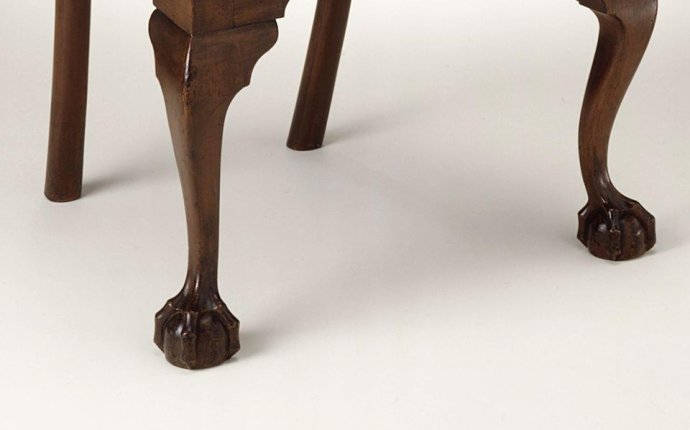
Antique Furniture Foot Styles
|
|
| Marlborough foot
See above |
|
|
Monopodium |
|
|
Onion foot An onion-shaped turned foot of the Early Renaissance not very much used after the William and Mary Period. |
|
|
Pad foot Alternate names: Dutch foot, club foot A flattened disk-like foot often found under a cabriole leg. It is similar to a club foot. Sometimes a club foot resting on a disk is termed pad foot. Favored on Queen Anne cabriole legs |
|
|
Paw foot A foot carved to resemble an animal's paw, most frequently that of a lion. Above it there is generally carved leafage. "Greek tripod tables (usually used for serving wine) had legs carved into animal leg and designs modified from ancient Egyptian prototypes with the introduction of duck heads and acanthus leaves." - Treena Crochet, Designer's Guide to Furniture Styles, " pub. 2204, p. 47 |
|
|
Reeded brass foot Often on a caster |
|
| Scroll foot / Scrolled toe / Whorl foot
See below See t above |
|
| Slipper foot
A club foot with a more pointed and protruding toe. Popular in Queen Anne period. |
|
|
Snake foot Foot carved to look like snake's head. Narrow elongated foot swelling slightly upward before pointed end. Found in 18th century English and American furniture, e.g., Queen Anne, Chippendale and some Federal tripod-base tables |
|
|
Spade foot Tapered rectangular foot Commonly found in Hepplewhite and Sheraton designs. |
|
|
Spanish foot Also called: Spanish scroll foot or Braganza toe Scrolled foot with curving vertical ribs A hoof-like, grooved and flared foot which ends in an inward curving scroll Introduced from Portugal during the Restoration period and used in 18th-century English and American furniture, especially on turned legs in the William and Mary and the Queen Anne periods |
|
| Splay foot
Same as above. |
|
|
Trifid (TRY fid) foot
Derived from Irish furniture design. |
|
| Turnip foot
A ball foot with a small collar at the base |
|
|
Whorl foot / scrolled toe / scroll foot A reverse scroll foot An up-curved, carved foot done in scroll motif, terminating a cabriole leg. A flattened scroll at the end of a cabriole leg originated in the Louis XIV (Baroque) period Used on Louis XV (Rococo) substyle pieces. Many of the drawings in Thomas Chippendale's Gentleman and Cabinet Maker's Director in 1754 feature whorl feet. |









